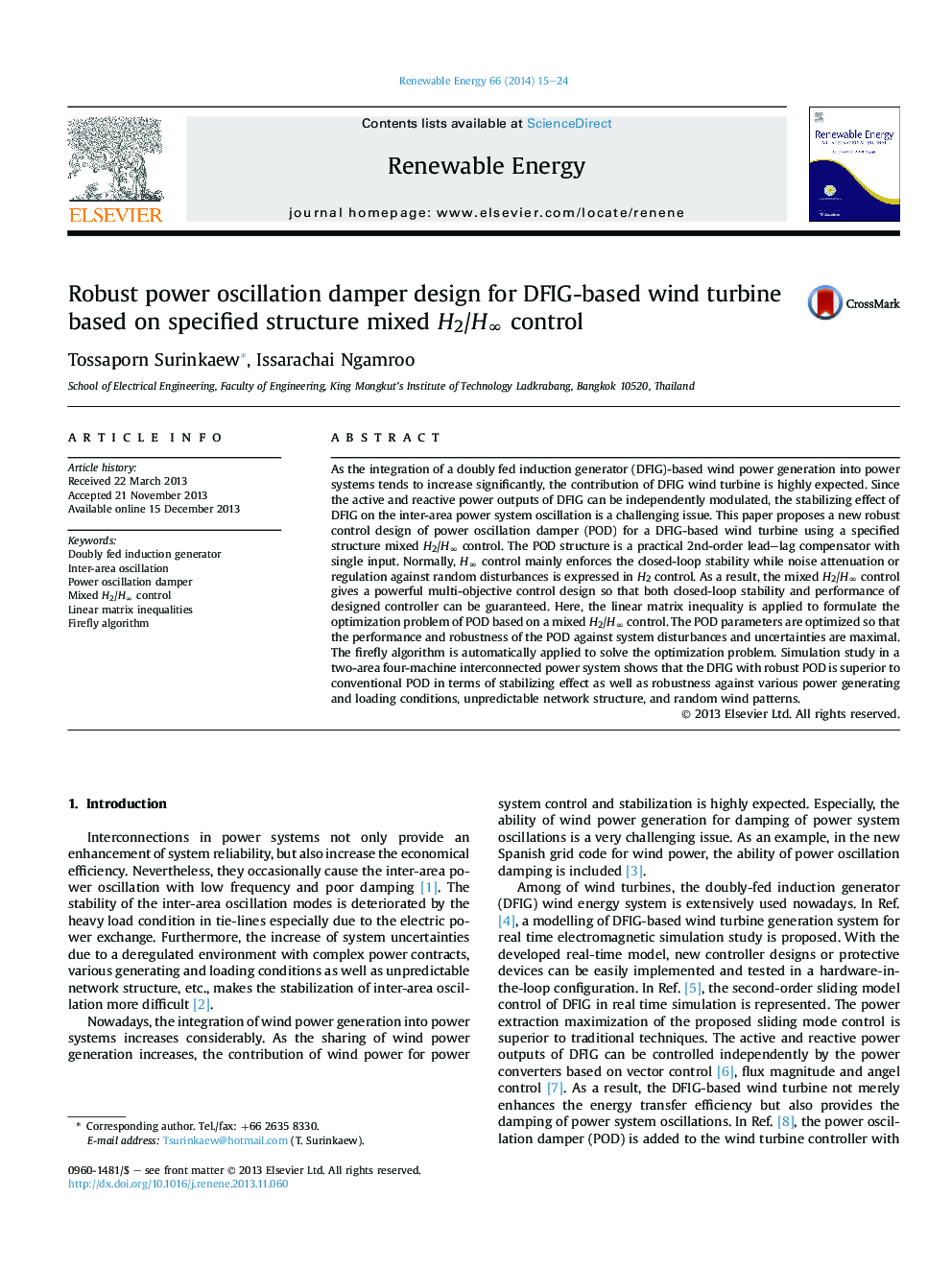| Article ID | Journal | Published Year | Pages | File Type |
|---|---|---|---|---|
| 6768425 | Renewable Energy | 2014 | 10 Pages |
Abstract
As the integration of a doubly fed induction generator (DFIG)-based wind power generation into power systems tends to increase significantly, the contribution of DFIG wind turbine is highly expected. Since the active and reactive power outputs of DFIG can be independently modulated, the stabilizing effect of DFIG on the inter-area power system oscillation is a challenging issue. This paper proposes a new robust control design of power oscillation damper (POD) for a DFIG-based wind turbine using a specified structure mixed H2/Hâ control. The POD structure is a practical 2nd-order lead-lag compensator with single input. Normally, Hâ control mainly enforces the closed-loop stability while noise attenuation or regulation against random disturbances is expressed in H2 control. As a result, the mixed H2/Hâ control gives a powerful multi-objective control design so that both closed-loop stability and performance of designed controller can be guaranteed. Here, the linear matrix inequality is applied to formulate the optimization problem of POD based on a mixed H2/Hâ control. The POD parameters are optimized so that the performance and robustness of the POD against system disturbances and uncertainties are maximal. The firefly algorithm is automatically applied to solve the optimization problem. Simulation study in a two-area four-machine interconnected power system shows that the DFIG with robust POD is superior to conventional POD in terms of stabilizing effect as well as robustness against various power generating and loading conditions, unpredictable network structure, and random wind patterns.
Keywords
Related Topics
Physical Sciences and Engineering
Energy
Renewable Energy, Sustainability and the Environment
Authors
Tossaporn Surinkaew, Issarachai Ngamroo,
